Walls of Theresienstadt
ghetto
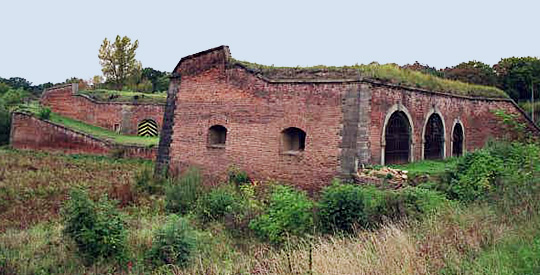 Theresienstadt was
surrounded by ramparts with bastions
Theresienstadt was
surrounded by ramparts with bastions
Theresienstadt was originally a military
garrison surrounded by two sets of brick walls with a deep moat
in between them. Jutting out from the outside wall were two large
bastions on the east and west sides, two medium sized bastions
on the north and south sides and two small bastions at the northwest
and northeast corners.
The walls and basions are very close
to the highway, as shown in the photo below.
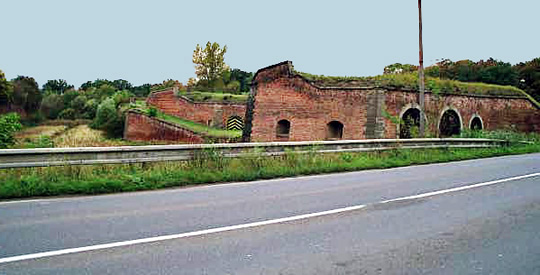 Highway goes past former
military garrison at Theresienstadt
Highway goes past former
military garrison at Theresienstadt
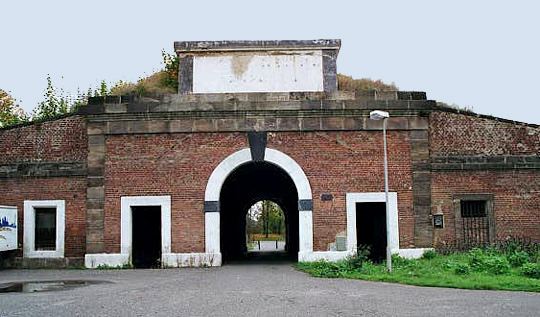 Gate through the wall
around the former fortress at Theresienstadt
Gate through the wall
around the former fortress at Theresienstadt
The photo above shows the gate into the
former Theresienstadt ghetto, taken from inside the walled town.
The photograph below was taken outside
the ghetto; it shows the other side of the gate pictured above;
you can see the red rooftop of the Magdeburg Barracks in the
background.
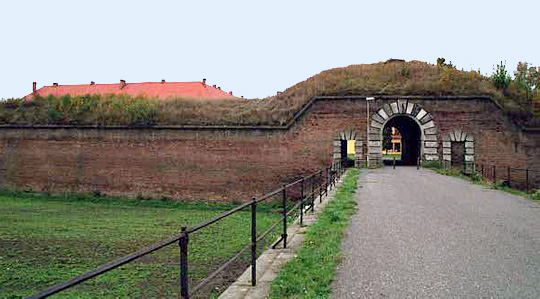 Gate into walled town
with moat in foreground on the left
Gate into walled town
with moat in foreground on the left
I began my tour of the former Theresienstadt
ghetto in 2000 by taking a bus from Prague to the town of Terezin.
The first bus left for Terezin at 7 a.m. and the next bus was
not until 3 hours later. For the return trip, buses left every
hour, starting at 1:30 in the afternoon. There is an information
booth at the bus station where you can get the bus schedule from
an English speaking person. The town is now called by the Czech
name Terezin, so don't make the mistake of asking for a bus ticket
to Theresienstadt. After more than a thousand years of being
ruled by the Germans, and two world wars being fought over who
would own this territory, it is understandable that the Czechs
do not take kindly to anyone calling their cities by the original
German names.
When Theresienstadt was built in 1780,
it was designed as a fortress in which soldiers of the Austrian
Empire could stave off a possible attack by their enemies, the
Prussians, who ruled the territory only 60 kilometers to the
north.
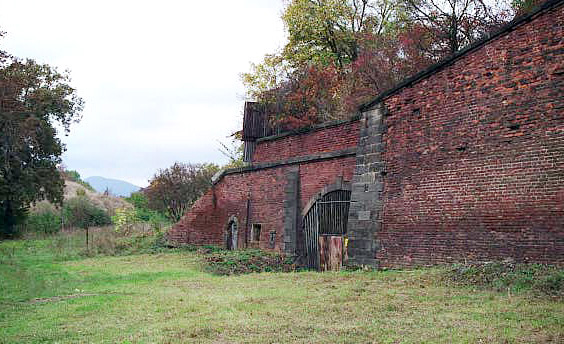 Sudeten mountain range
in the background
Sudeten mountain range
in the background
It took ten years to complete the building
of the Theresienstadt garrison. It was never used in wartime
as a fortress and eventually the garrison became a small town
in Austria-Hungary with a population of 3,500 people. After World
War I, the Austrian empire was broken up and the town was included
in the new country of Czechoslovakia. At that time, the name
was changed to Terezin, the Czech version of the original name
of Theresienstadt.
During World War II, the Nazis changed
the name back to Theresienstadt and turned the whole town into
a transit camp for thousands of Jews who were sent from here
to the gas chambers at Auschwitz.
The moats between the fortification walls,
which were planted with vegetables when the town was a ghetto,
are now flower gardens or horse pastures.
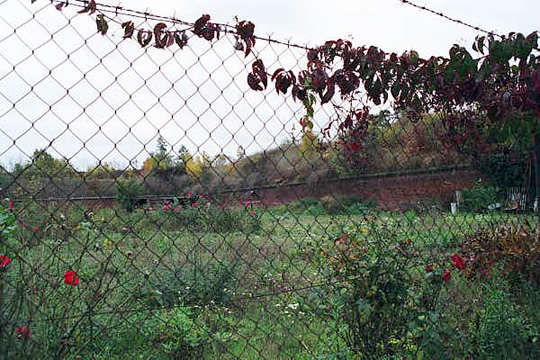 Flowers grow in the
dry moat where the vegetable garden used to be
Flowers grow in the
dry moat where the vegetable garden used to be
|